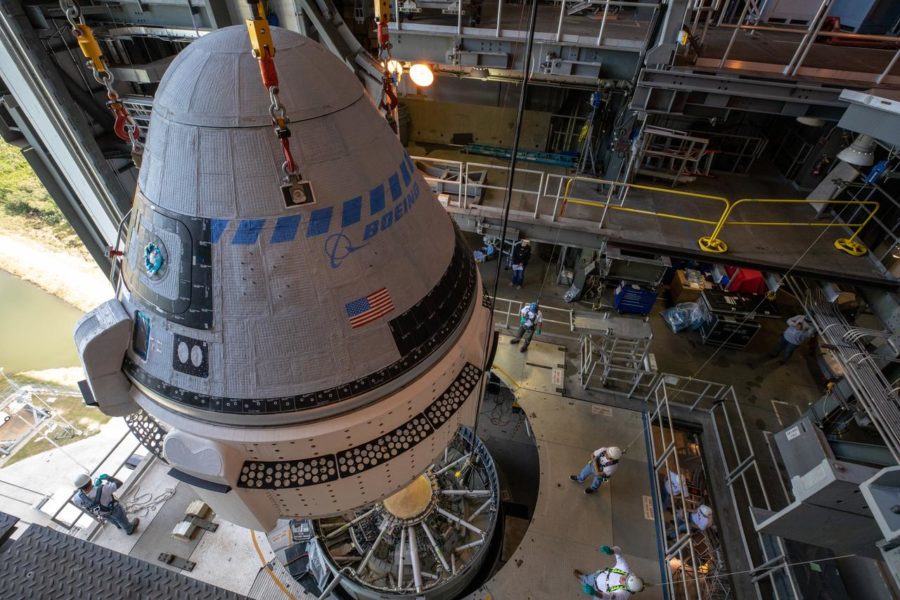Boeing Makes Significant Milestones on the Starliner and SLS Projects
The first Boeing CST-100 Starliner is prepared to mate to the Atlas V rocket inside the Vertical Integration Facility at SLC-41 on Nov 21. Photo Credit: NASA/Cory Huston.
Boeing has completed the integration of the engines for the first stage of the Space Launch System (SLS) and made significant progress on the CST-100 Starliner project.
The two spaceflight projects which NASA is working on is the Space Launch System or SLS (the rocket which NASA plans to send to the moon with crew), and the CST-100 Starliner spacecraft which will transport crew to and from the International Space Station or ISS. However, both projects have been behind schedule. Here is a look at the recent milestones Boeing has made.
Starliner Pad Abort Test:
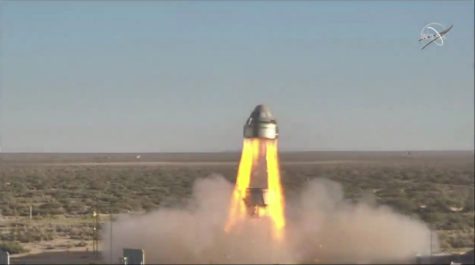
On Nov 4, Boeing conducted an abort test at Launch Complex 32 at White Sands Missile Range, New Mexico. The test was carried out to test the launch escape system, which is designed to save astronauts during a launch if the rocket failed.
The spacecraft uses its RS-88 (Bantam) engines during abort situations. The abort engines are built by Aerojet Rocketdyne. The RS-88 engines run on hypergolic fuels. These fuels are extremely toxic.
The motors suffered an anomaly in 2018 which caused for longer delays in the development of the spacecraft. The engines are located inside the Service Module.
During the test, which occurred at 9:15 am EST, the RS-88 engines fired for a total of five seconds with some thrusters which fired for another ten seconds. The spacecraft reached a maximum altitude of 1,350 meters before it started to fall back to Earth.
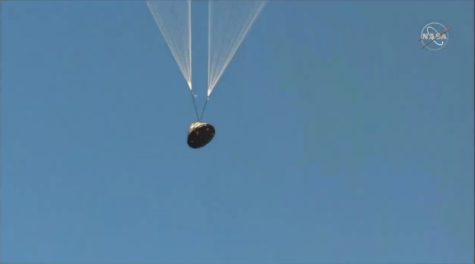
The spacecraft then deployed two out of it’s three parachutes. Then it jettisoned the Service module.
After that, Starliner jettisoned it’s dummy heat shield, and then inflated it’s airbags for touchdown. The airbags softens the landing impact for future astronauts.
The touchdown on the desert floor was hard. But, it was within the acceptable margins set by Boeing and NASA.
Boeing later announced that the problem was due to human error. The issue will not effect the maiden test flight of the Starliner, but it may delay the manned test flight later in 2020.
Preparations for the CST-100 Starliner Orbital Flight Test at SLC-41:
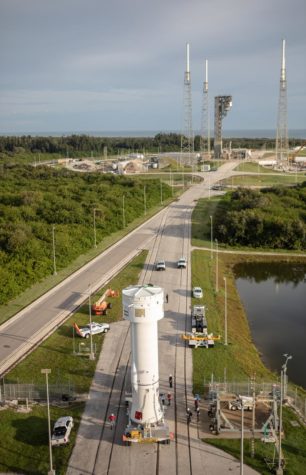
Boeing, NASA, and United Launch Alliance (ULA) are preparing for the maiden flight of Boeing’s CST-100 Starliner and the first flight of the N22 variant of the Atlas V. The N22 version of the Atlas V means that there will be no fairing, two solid rocket boosters, and two RL10 engines on the Centaur upper stage. The Atlas V rocket has been designated AV-080.
The Centaur upper-stage on the N22 rocket is the first time that there has been a dual-engine Centaur on an Atlas V variant. But, the dual-engine Centaur was used on the former Titan III-E rocket and former Atlas rocket variants. The last time a dual-engine Centaur was flown in space was on an Atlas II in 2004.
The use of a dual-engine Centaur upper stage gives NASA and Boeing more abort options, and helps in the event of an engine failure. The option also helps avoid the issue that the Centaur is a low-thrust stage with a single engine in comparison to the SpaceX Falcon 9 second stage.
The maiden flight, called the Boeing Orbital Flight Test (Boe-OFT) is planned to be an unmanned test flight of the Starliner spacecraft. The spacecraft will rendezvous and dock with the International Space Station.
Starliner, along with SpaceX’s Crew Dragon are both part of NASA’s Commercial Crew Program. The program is a replacement for American crew transportation to and from the ISS.
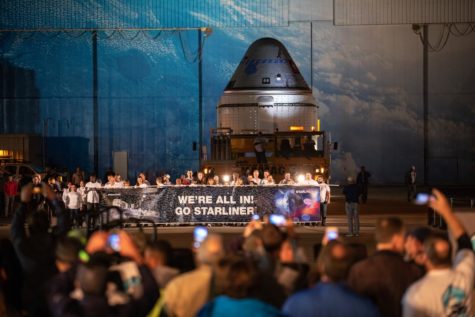
After spending a few days at the station, the spacecraft will undock from the station. It will soon after carry out a deorbit burn.
It then will reenter and touch down at the White Sands Missile Range in New Mexico. The spacecraft will be the first capsule built by the United States to land on land instead of water like the Russians do.
As with all Atlas V rockets, the launch site is Space Launch Complex-41 (SLC-41) at Cape Canaveral Air Force Station. Cape Canaveral Air Force Station (CCAFS) is adjacent to NASA’s Kennedy Space Center.
SLC-41 has a rich history as a Launch Complex. The site was first used in 1965. Over the years rockets like the Titan IIIC, Titan IIIE, Titan IV, and the current Atlas V. The site will be used by ULA’s future Vulcan rocket around 2021.
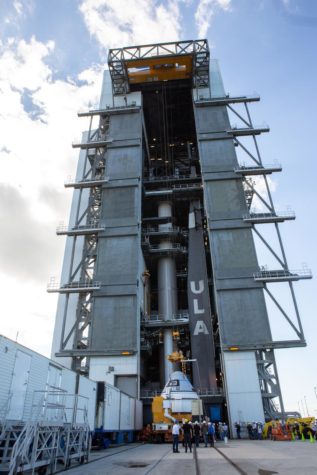
Prior to the arrival of the Starliner to the launch site, the spacecraft was assembled and fueled at a location at Kennedy Space Center (KSC). Meanwhile, the Atlas V first stage, solid rocket boosters, and Centaur upper stage were integrated and stacked vertically inside the Vertical Integration Facility (VIF) at SLC-41 by Nov 8.
In the early hours of Nov 21, Boeing slowly rolled their new CST-100 Starliner from the processing facility at KSC to the VIF at SLC-41. Once there, the Starliner was lifted off of a truck, and into the air via a crane inside the VIF. Not long after, the Starliner, which was already mated with the Service Module, was lowered and mated to the top of the dual-engine Centaur upper stage.
“Woohoo. #Starliner is mated to the Mighty Atlas. #OFT is getting closer…,” tweeted President and CEO of United Launch Alliance, Tory Bruno in response to the integration of the Starliner spacecraft.
After all the connections are made between the Atlas rocket and the Starliner, ULA will conduct what is called an Integrated Systems Test. This is an electrical test of the entire rocket. One of the final tests will be the Integrated Day-of-Launch Test, which will be a dress rehearsal for the launch countdown.
The last time a human flew on an Atlas rocket was Gordon Cooper on his spacecraft, Faith 7 during the Mercury-Atlas 9 mission on May 15, 1963. The future manned test flight for Starliner therefore will be historic.
The launch date for the Boe-OFT mission to the ISS is scheduled for Dec 17 at 7:45 EST. However, the launch date could change in the near future.
First SLS Core Stage almost completed:
NASA builds the SLS core stage, otherwise known as the first stage at it’s Michoud Assembly Facility in New Orleans, LA. Michoud is the same facility that built the first stage of the Saturn V rocket for the Apollo program and the External Tank for the Space Shuttle program.

The four RS-25 engines that were fitted to the SLS core stage are veteran Shuttle engines. After the conclusion of the Space Shuttle program in 2011, NASA decided to keep each of the engines left from all three of the remaining Space Shuttle Orbiters, Discovery, Endeavour, and Atlantis.
Technicians removed the real engines and replaced them with mock-ups on the shuttles for display in museums. At the end of the program, NASA had a stockpile of 16 RS-25 engines. More RS-25s will be built after NASA runs out of them.
Since the end of the Shuttle program, the remaining RS-25 engines have been further modified by the manufacturer, Aerojet Rocketdyne. They were modified to have more thrust output and with more modern computers.
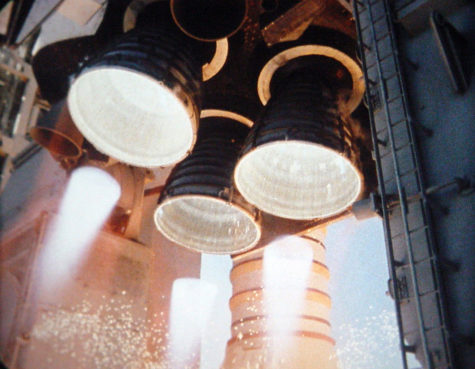
The first flight of the SLS rocket will be on Artemis-1. The Artemis Program’s goal is to land the first woman and the second man on the moon by 2024, which was signed in a presidential proclamation by President Trump. Vice-President Pence has been one of the more vocal US politicians on the Artemis program.
However, there is a possibility of further delays to the Artemis program. These delays could put the goal of a 2024 moon landing in jeopardy, and delay the event to a later date.
The RS-25 engines run on both Liquid Oxygen (LOX) and Liquid Hydrogen (LH2). On Artemis-1, RS-25 engines E2045, E2056, E2058, and E2060 will fly on their final launch. E2045 is the oldest of the engines with a history of 12 Space Shuttle flights. E2045 was used on STS-95 in 1998 which launched Astronaut John Glenn into space on his second spaceflight, becoming the oldest man in space.
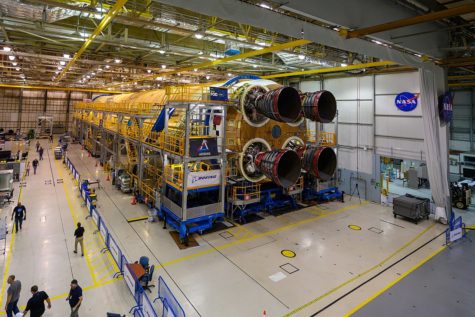
The SLS core stages are produced at NASA’s Michoud Assembly Facility. Photo Credit: Jared Lyons/NASA.
After the first SLS first stage is fully completed, it will then be shipped on NASA’s Pegasus barge to the John C Stennis Space Center in Mississippi. There, the stage will be put on a test stand and fired up for a full duration test. After that, certain components will be refurbished and the stage will be shipped on the Pegasus barge to Kennedy Space Center. There, preparations will be done for integration for Artemis-1.
Artemis-1 is scheduled for no earlier than January of 2021. Artemis-1 will launch from Launch Complex-39B (LC-39B) from Kennedy Space Center in Florida. When Artemis-1 launches, it will be the first launch from LC-39B since the Ares-1X prototype launch in 2009.


